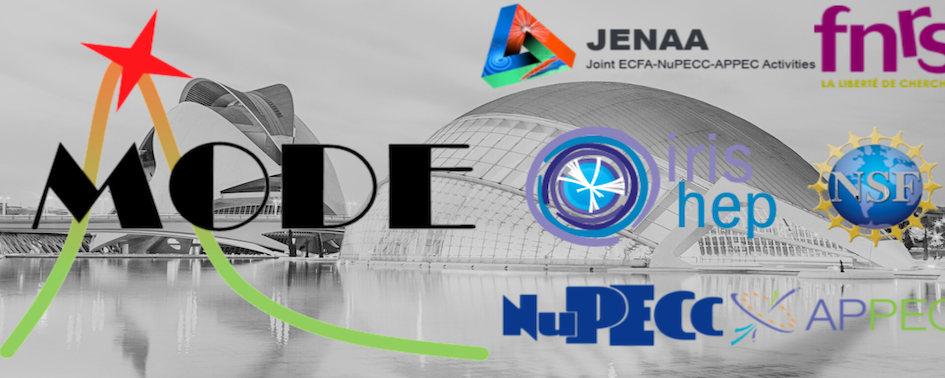Speaker
Description
Objective: One of the mayor challenges in positron emission tomography (PET) is to increase system efficiency without sacrificing spatial resolution. Including the contribution of inter-crystal scatter (ICS) events during image reconstruction is one way of achieving this aim, provided a method for estimating the primary photon path in such events is available. The IRIS group (IFIC, Valencia) is investigating the application of a neural network (NN) which utilizes 3D positioning information and energy deposition inside the detector to identify the primary interaction in ICS events. This approach has been implemented on novel semi-monolithic PET detector geometries developed by i3M (Valencia). Such detectors consist of monolithic LYSO scintillation crystals segmented in one direction into sections called slabs, combining the benefits of pixelated and continuous configurations, including 3D positioning capabilities.
Approach: Simulation studies have been carried out to test the performance of the NN for ICS recovery in two different detector designs: the IMAS total body PET, which utilizes slabs of 3.12 mm in width, each coupled to a single row of eight silicon photomultipliers (SiPMs); as well as the brain-dedicated 4D-PET, which achieves the high resolution required for brain imaging by using thin slabs of 1.6 mm in width in a light-sharing design, whereby pairs of slabs are coupled to a single row of SiPMs. Both detectors were simulated using GATE v8.2 and 511 keV photons tracked through the scintillation crystals. Singles were created on the slab level with experimental values for spatial and energy blurring
applied in post-processing. An energy window of 350-650 keV was used. Singles were grouped into single-photon events according to eventID and classified as either single-slab events, ICS events involving two slabs and ICS events involving three or more slabs. Only those events involving two slabs were considered for recovery. The NN used for ICS recovery was implemented in Python3 using Tensorflow and Keras. The data collected from the simulation consisted of the 3D spatial and energy information from each of the two singles comprising the single-photon event. The data was split into training, evaluation and test sets consisting of 90%, 5% and 5% of the data, respectively. The parameters used were depth of interaction (DOI), deposited energy, position along slab and separation between slabs. The NN architecture consisted of two hidden layers of 64 neurons each, with the ReLU activation function on the input and hidden nodes and the sigmoid activation function on the output node. The Adam optimizer was used for training as well as the binary crossentropy loss function. For the case of the light-sharing slab-pairs of the 4D-PET detector, a simulation that included optical photons was performed and a second NN, trained on light distribution on an 8x8 SiPM array, was implemented in order to distinguish ICS from photoelectric (PE) events in slab-pairs that share a common row of SiPMs. The 8x8 array was summed in both dimensions, yielding 1x16 input for the NN. Keras and Tensorflow were used, with the same parameters as above. The input layer and single hidden layer consisted of 16 neurons each.
Main results: The fraction of 511 keV photons interacting in two slabs, and therefore eligible for recovery using the NN, was found to be 26% and 29% for the IMAS and 4D-PET detectors, respectively. The respective fraction of single-slab events was 71% and 66%, with the remaining photons interacting in three or more slabs. The slab of first interaction was estimated in the 2-slab events with an accuracy 74% and 71% for the IMAS and 4D-PET detectors respectively. Identification of ICS (vs PE) in light-sharing detectors was performed with an accuracy of 98%.
Significance: This work presents a simulation study of two different semi-monolithic PET detectors, demonstrating that in such detectors a significant fraction of 511 keV photons undergo ICS in two slabs. The recovery of such events would significantly improve the scanner’s efficiency. The potential of using NNs and 3D positional and energy information for determining the slab of the first interaction in these ICS events has been demonstrated. Further work will concentrate on estimating 3D interaction positions and energy depositions in each of the slabs comprising a light-sharing pair in which ICS occurs, as the uncertainty on these quantities has been shown to impact the accuracy of estimating the
first interaction.
